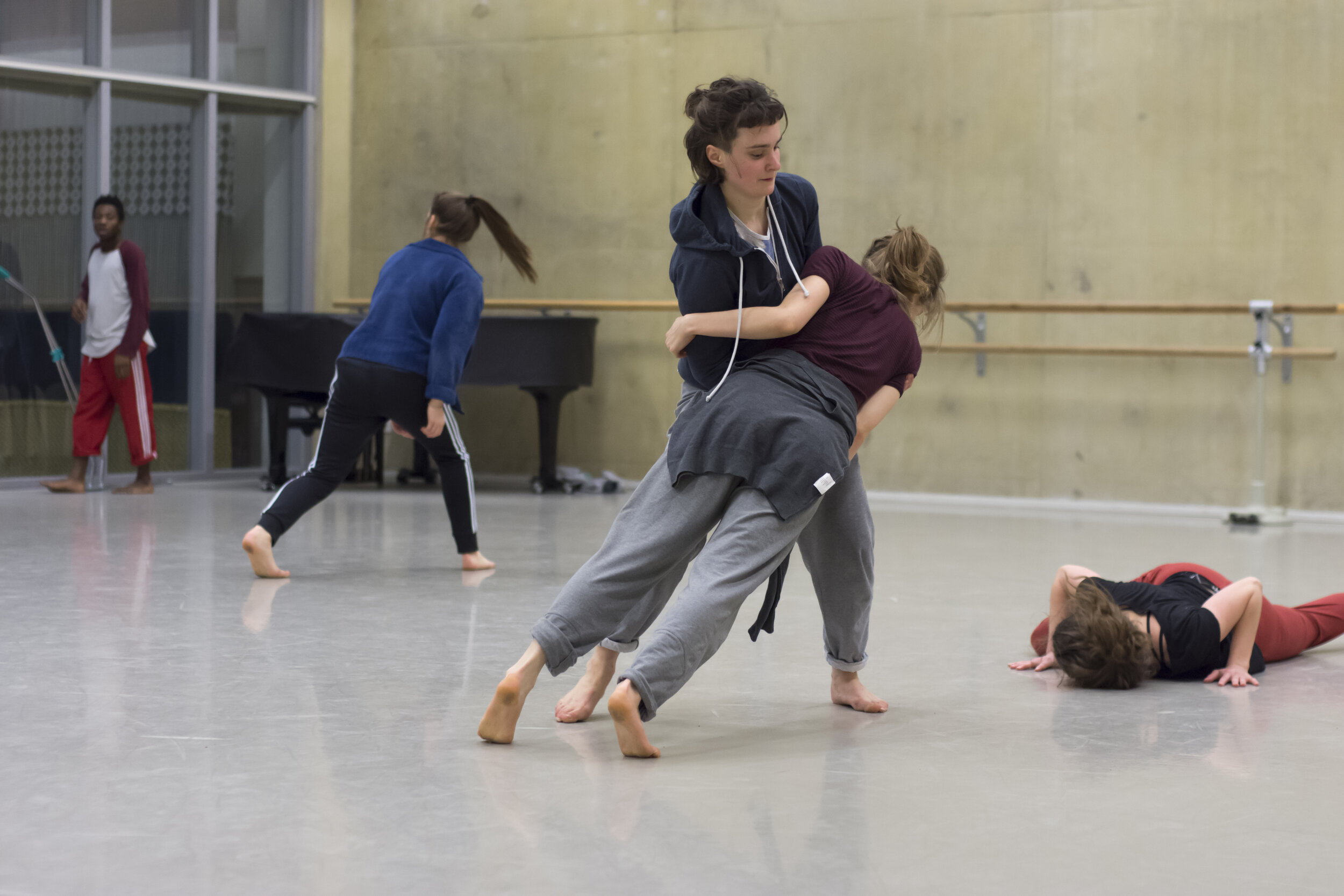Contact Improvisation
<< Contact Improvisation is an open-ended exploration of the kinesthetic possibilities of bodies moving through contact. Sometimes wild and athletic, sometimes quiet and meditative, it is a form open to all bodies and enquiring minds. >>
- Ray Chung, London
In regular classes or workshops we offer the possibility to experiment with the principles of contact improvisation in a challenging and energetic way. Feeling, trusting, falling and moving together, with partner and the whole group. Starting with elementary exercises of contact improvisation we create an atmosphere of sharing and taking care. The awareness of your own weight and the ability to take someone else’s will be discovered through playful exercises and improvised experiments. At the same time, the level and quality of the tasks will develop into a rising energy of daring and taking risks together. The aim is to built a group of movers who feel, trust and motivate each other in order to fully enjoy and be playful and respectful with the intensity of the shared movements.
The sessions are adaptable to different levels and experiences of contact improvisation.
Historical Background and definition
Contact Improvisation (CI) is a constantly developing movement system which was originally initiated by the American dancer and choreographer Steve Paxton in 1972, , guided by the search for community and collectivism of that period. One was searching for a social setting where everybody was treated equally and people could share dancing and living together. This tendency reflects the importance of the ‘for and with each other’ as a key to the practise.
It is an improvised form of dance which is based on the main principle of having physical contact between two or more moving bodies who are at all moment in relation to the physical laws, such as momentum, gravity and inertia. Contacters are playing with the investigation of balances, the search for ways to support or liberate each other to fly. Periodically breaking the physical contact is possible as long as the major goal is to keep the relationship with each other alive. In Contact Improvisation, the movements and forms occur as a result of what happens in the present moment. Paxton was interested in researching the movement possibilities of the pairing of bodies through the crucial phenomenon of touch and motion. He pictures CI as a << dance primarily between two people who remain in touch but dance independently, creating a third entity between them. This third entity is CI >> / Pallant, 2006

























